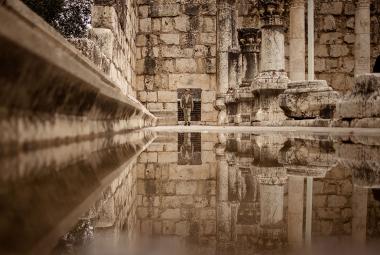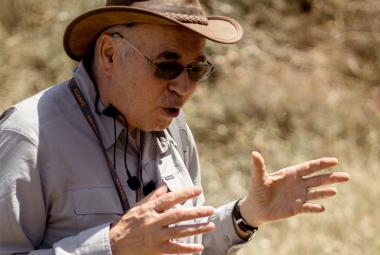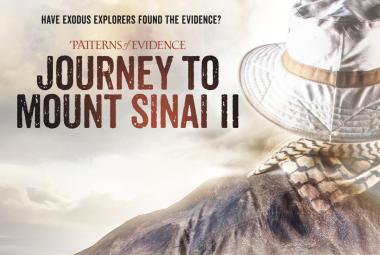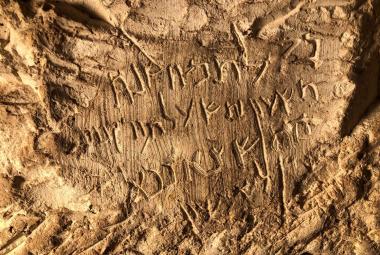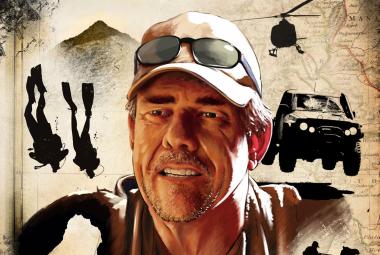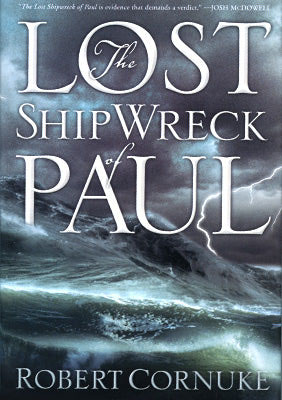The Southeast Coast of Malta - 1971
A ripening sun lifted off the horizon as they rounded Point, Zonqor point, their weathered boat cutting through the choppy sea toward the reef where the big groupers swam. Ray sat in the back of the skiff, his small hand gripping the throttle of the sputtering two-stroke outboard motor. Ray kept his eyes fixed on his mentor and teacher in the front of the boat, who was preparing the cylinders and weight belts for the dive. Ray secretly idolized Tony, who was known throughout the island of Malta as a great diver. Tanned, bronzed, and strong, in the pecking order of local spear fishermen, Tony stood apart.
Ray’s friends told him that he was too young, that it was too dangerous to dive the deep waters along the reef. And though only fourteen, he understood the risks. He’d heard the stories of those who never surfaced again after chasing the big ones. But it didn’t scare him; he knew that deep water brought bigger fish.
Ray eased his tired grip on the vibrating throttle and began a long, slow circle. He had been out to the dive spot before, but waited until Tony said “Here!” to cut the engine. Tony tossed the anchor overboard, the rattling chain slipping through his calloused fingers. “Get my tanks,” he said, gazing down as the anchor vanished into the sea.
Slinging the harness holding the twin metal cylinders onto his broad shoulders, Tony shot a glance at young Ray, struggling silently to hoist his own heavy tanks onto his skinny frame. Tony reached out a hand to help. Ray leaned away, embarrassed, and then quickly wrestled the weight belt up around his waist, cinched his equipment tight, and in perfect sync with Tony, spit into his mask, smearing saliva across the glass to keep it from fogging during the dive. They popped the hard rubber regulators into their mouths, cradled their spearguns against their chests, and rocked softly backward off the gunwales and into the sea.
The pressure of the heavy tanks on Ray’s shoulders eased as he felt himself gliding down slowly into a weightless, indigo blue world of dancing bubbles and piercing shafts of sunlight. As his body plunged into the clear Mediterranean, Ray savored the cool splash of water flooding his senses. Down here all was quiet, except for the hiss of air flowing in and out of the regulator. The water chilled and darkened as they swam deeper along the rocky sides of the big reef.
Nearer the bottom, Ray and Tony eased their pace, maneuvering through jagged crags and swaying seaweed, looking for the slow shadowy forms of feeding groupers. As much as Ray loved these deepwater outings, he understood that they were serious business. The big fish brought good money from the island restaurants, but it was no easy task. Ray had speared groupers before and compared it to roping a bull. If you didn’t spear it square between the eyes, the fish would drag you.
One forty-pounder had pulled Ray for over thirty meters before curling itself in a deep cave, where it opened its gills and wedged itself tight. When a big grouper wedges itself thick, it is very hard to pull it free.
Tony had helped many divers in such predicaments; typically he would swim in after the fish, following the line through the narrow, rocky passage way. Pulling himself into the consuming darkness, he would feel for the metal spear still lodged in the wounded fish. Then he’d slide his hand into the grouper’s gills and yank it free, dragging it out of the cave where it would be easily killed. Tony didn’t consider this a risky maneuver, only a simple solution to a frequent problem. Hours later, some appreciative tourist would look at a steaming plate of grouper set in front of him and never imagine what someone had done to secure his delectable entrée.
Stroking silently along the reef, Tony stopped suddenly. He saw a grouper—big, brown, with brassy spots and huge jaws—slipping over a rock, trailing a small fish through the seaweed. With one swift, powerful thrust, the grouper pounced on its prey. Tony reached down and carefully pulled the rubber tubing along the speargun shaft and cocked the gun. He didn’t bother to signal Ray, who saw what was going on and knew to keep his distance.
Groupers are voracious, violent feeders. A meal for a big one like this is anything that moves or that can fit in its mouth. Chomping down on its kill, however, it little knew that a spear was aimed at its skull. With a spray of bubbles, the spear lance exploded from Tony’s speargun, glanced off a rock, and spiraled to a stop on the seabed below. He had missed. Tony could hardly believe his eyes as the grouper shot off into the shadows of a nearby cave. Above him, Ray cringed, knowing Tony’s anger at missing such a big one.
Wasting no time, Tony arched downward, his muscular legs kicking hard toward the seafloor, wanting only to retrieve the wasted spear and resume the hunt. Reaching for the spear, he examined its newly bent tip and then turned, disgusted, to swim off. And that’s when he saw it. From the corner of his eye, he saw a mysterious bulky form half-covered in the swaying seaweed. Tony fanned his gloved hand at the form, and as the swirl of sand settled, Ray could see it too. Swimming closer to get a better view, Ray’s heart skipped a beat. Lying before him was a big, dark object covered in crustaceans. Unsheathing his knife, Tony scraped off a chip, revealing the dull glint of metal.
After belonging to the sea for almost two thousand years, this ancient object now belonged to them.
TWENTY-NINE YEARS LATER
LAKE TANA, ETHIOPIA-APRIL 2000
I stepped from the darkness of the tombs, which were perched high on some jagged cliffs. My research team had just been shown some crumbling old manuscripts and skeletons of Ethiopian kings and now found ourselves squinting into the blinding, oppressively hot sun. As my eyes fought to adjust, I could just make out the captain’s form waving at me far below in the tiny inlet.
It was late—far later than I promised the boat captain—and we still had several hours to cross the forty or so miles of Lake Tana to get from this remote island to the port city of Bahar Dar. The captain kept shouting at us, but we couldn’t make out what he was saying. I made my way down from the cliffs through a tangled thatch of trees, along a narrow footpath, and beneath a gauze canopy of spiderwebs spread across the branches. I looked up to see thick vines infested with hundreds of scurrying, long-legged spiders roused from their sun-baked lethargy.
Ducking underneath the dangling webs, our group made its way along the ridge, where I could finally see the boat captain pacing back and forth across the bow, rubbing nervous hands over his sweat-smeared face, He glanced up to see us.
“We GO! We Go!” he screamed waving wildly at the horizon. I looked to see a small front gathering in the distance.
Our group hurried down the narrow path, stepping cautiously on rocks worn slick and round by centuries of barefooted monks padding up and down the hand-hewn stairs. Within five minutes we’d reached the lagoon, hands on our knees, panting for air. The captain didn’t intend to give us even a moment’s rest.
‘We GO! We GO!” he kept shouting.
With my backpack slung across my shoulder, I slid down the last steps to the rickety dock and our waiting boat. The fifty-year-old rusty-hulled, forty-foot government schooner wasn’t much to look at, much less sail in. It had an old clattering engine that made loud exploding noises and belched thick black diesel smoke. I tossed my pack to the Ethiopian lad who served as a sort of first-mate to the captain, and we all climbed aboard. Even before I could stuff my bags below, the captain gunned the engine while my friends cast off the bow and stern lines. Within moments we were chugging into open water across the vast lake.
I still wasn’t sure what had gotten the captain so worked up, but he seemed to be coming unglued, his expression betraying raw fear. Then I stared up at the western horizon and swallowed hard: The small front had now grown into an enormous, swollen bank of white-gray thunderheads mushrooming heavenward. Within its deep malevolent greens and purples I saw the first pulsing stabs of lightning.
I’d seen these storms on prior trips to Ethiopia—and wished I hadn’t Forming silently in the moist heat swirling over the jungles and lakes, at dusk the currents would clash with the cool air in the upper atmosphere, stirring up some lethal storms. A year earlier, I’d been stranded on neighboring Tana Kirkos Island during the most ferocious storm I’d ever endured. It ripped across the island, flooding everything and nearly blowing our camp off the cliffs. To get hit by one of those on the open water was unthinkable, but by the looks of those clouds, it was already upon us.
The storm advanced quickly, the wind gaining speed as a wall of inky black swallowing up the last patches of blue sky. I didn’t kid myself that we could out-run it; the clouds swirled and surrounded us, as if bent on destruction. By nightfall the swells had begun pounding against the boat—angry, rolling whitecaps hammering the rusty metal hull, lifting the bow out of the water, then slamming its nose headlong into the surf. The rain felt like lead pellets against our faces, driven down and then horizontal by the gathering gale, with only lightning breaking through the consuming darkness.
My research team—Ray Ardizzone, Dr. Pete Leininger, Ron Hicks, and Todd Phillips—sat huddled under an old rotting tarp they’d stretched across the deck, listening to the captain in the wheelhouse screaming frantically into a radio microphone trying to raise someone who could help. But I couldn’t imagine anyone reaching us in this terrible tempest. I couldn’t speak the captain’s language, but had no trouble understanding what he was saying. His desperate cries for help had so far gone unanswered. (We learned later that the power at Bahar Dar had been knocked out by the storm, which we might have guessed by the pitch-black shoreline eerily invisible off our bow).
That’s when we hit the rocks.
The impact threw us forward with a horrible and unforgettable sound of metal crunching upon rock. So that was the reason for the captain’s erratic behavior—he knew that lying silently under the dark waters of the outer harbor sat a jagged reef of sharp rock outcroppings hard enough to see in broad daylight but impossible to navigate in a dark storm. The boat’s metal hull ripping against the rocks created a megaphone effect that exploded in our ears—as if the boat itself shrieked out in pain. The hull climbed the rocks, shredding metal and causing the boat to list sideways. Then we heard—and felt—the grinding clatter of propeller blades smashing against the rocks, shearing and shattering. The captain, still screaming into the boat’s radio, started to reverse gears but immediately snapped off the last bits of propeller, leaving the boat tilting and without traction.
Plumes of diesel smoke swirled around us, and from below deck someone shouted that we were taking on water. That’s when it suddenly struck me that we might soon sink, only three-and-a-half miles from shore. My next thought was, Maybe we could swim it. Though in these stormy waters it would be the last resort.
Just then, Misgana, my young Ethiopian guide, sat down beside me and calmly read my thoughts. Staring blankly into the rainfall he opened his mouth and swallowed a foaming mouthful of rain.
“I’m not going to swim tonight,” he said, water streaming out both sides of his mouth.
“What did you say?” I shouted over the howling wind.
Misgana leaned close, as though he didn’t want the others to hear. “I was raised on this lake,” he explained, “and I have sailed these waters my whole life.” He stopped and stared at the heaving waves. “I know what lives in these waters. There are crocodiles. Closer to shore there are hippos, and then the snakes.”
He shook his head defiantly. “No, no,” he said, concluding the matter “I prefer a pleasant death. I will hold on to this railing and go down with the boat. But I will not swim tonight.”
Watching Misgana sit back against the railing and stretch out both arms in an apparent surrender to death, I knew we were in serious trouble. If Misgana, who had probably weathered a hundred of these storms, was throwing in the towel, then what hope was there? I left Misgana staring off into the darkness and went to roust the team for some earnest prayer.
So far no one on our team had begun to panic. The waves were crashing across the deck, and it seemed as if the boat might tip and founder at any moment. I asked my friend Ray to lead us in a prayer, and pray we did. We prayed for our families, we prayed for our deliverance, and then we placed the entire situation squarely in God’s hands.
After several minutes, when we’d finished, we turned our attention to the problem at hand—a badly damaged and sinking ship. Just then a small dot of yellow light appeared some three hundred yards off the bow, bobbing violently in the wall of darkness. It disappeared then reappeared, disappeared then reappeared in fitful rhythm with each careening swell—when, a few minutes later, we saw the source of the light. Struggling mightily against the waves, propelled by a sputtering, five-horsepower engine, bobbed a fifteen-foot open-hulled aluminum fishing boat. The boat was so small and the swells so big that it kept vanishing into the troughs and reappearing on the top of each mounting whitecap.
It felt like forever, but the fishing skull finally reached the undertow of our rock outcropping. One of our young Ethiopian crew members took his rope and pulled them toward our bow. We swiveled a spotlight to see the weather-beaten skiff, piloted by three fishermen in rain slickers, bib rain pants, and rubber boots. Two of them used a ten-foot pole to push the boat through the perilous rocks, finally pulling alongside our crippled craft, where we could smell the potent stench of rotting fish from fishing nets that filled the small boat.
Within the hour we had safely reached shore, all of us enjoying our comfortable ride on the cushioned pile of fishing nets and cork floats. Once on shore, the fishermen confirmed our near-death experience; they told us they were returning to shore after a hard day of fishing when they barely saw the light from our boat. Well acquainted with the rocky reefs in the Bahar Dar channel, they saw that our boat was stranded and headed back into the storm to rescue us.
For me, for my crew, and for Misgana, the experience would be etched indelibly on our memories. A day later we returned to Addis Ababa to catch our flights home. Cruising away from the African continent, high over the Atlantic, I got up and grabbed my Bible from the overhead compartment. I was curious to see what I might find. I’d just spent two weeks in Ethiopia researching for a book project called In Search of the Lost Ark of the Covenant. In the process, I had survived a deadly storm and shipwreck. What, I wondered, was God trying to teach me in all this?
For the next several hours, I flipped through my Bible under a small beam of light, I found myself in the book of Acts, thumbing slowly to chapter 27 and the story of another shipwreck. Here Luke narrates the story of Paul, who while traveling to Rome on a large cargo vessel, ended up shipwrecked off the coast of Malta. The shipwreck story is amazingly detailed, describing everything from the vessel’s nautical headings to the ship’s direction of drift in the storm. The narrative goes on to explain weather patterns, duration at sea, geographic landmarks, reef configurations, sea depths, how the men onboard reacted, and how the life of every man onboard—including Paul’s—was spared.
I assumed, from repeated readings of those passages, that I knew the story fairly well. But as I reread it this night over the eastern Atlantic, my eyes kept returning to one verse: “And fearing that we might run aground somewhere on the rocks, they cast four anchors from the stern and wished for daybreak’ (Acts 27:29)
Then, reading further, I stopped at the words: “And casting off the anchors, they left them in the sea...” (v. 40).
Kept returning to those eight words:
...four anchors.
...they left them in the sea....
I wondered, rereading these dimly lit pages, if the story from Acts was calling to me across the ages. I couldn’t keep my mind from going where it wanted to go—where it had gone many times before. It wasn’t that I particularly wanted, or needed, to venture down this path, but the same curiosity that drove me to spend a good portion of my adulthood researching the mysteries of the Bible kicked in again. Experience had proven to me time and again that history had left behind subtle clues to validate many amazing biblical stories and that most of those clues were contained in the Bible itself. At thirty-nine thousand feet, I asked myself a couple of seemingly simple questions: Could those anchors mentioned in Acts 27 survive all this time? And if they did, could 1 find them?
MISSION MALTA
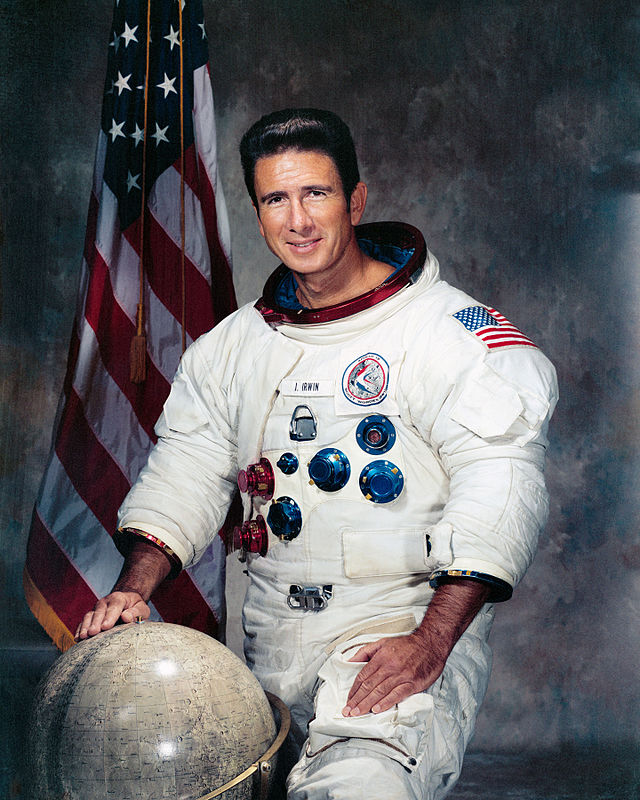 I thought long and hard before throwing myself headlong into a search for Paul’s sea anchors. I’d spent much of the past two decades searching the world over for lost locations of the Bible, and one adventure matched another only in the monumental amounts of energy, time, and resources required. In turn, I’d been arrested five times in the Middle East, dodged bullets, fallen off glaciers, crash-landed in airplanes, and been chased by military patrols in the middle of the night. And then, of course, the shipwreck in Ethiopia. After every trip, I seemed to find myself asking, Why do it? The answers to this question varied with each quest, but all could be traced back to a single day in 1985 when I met a man named Jim Irwin.
I thought long and hard before throwing myself headlong into a search for Paul’s sea anchors. I’d spent much of the past two decades searching the world over for lost locations of the Bible, and one adventure matched another only in the monumental amounts of energy, time, and resources required. In turn, I’d been arrested five times in the Middle East, dodged bullets, fallen off glaciers, crash-landed in airplanes, and been chased by military patrols in the middle of the night. And then, of course, the shipwreck in Ethiopia. After every trip, I seemed to find myself asking, Why do it? The answers to this question varied with each quest, but all could be traced back to a single day in 1985 when I met a man named Jim Irwin.
Some people are fortunate enough to have a person in their lives that helps them find their true passion, or launches them off in new and exciting directions. For some it’s a teacher, for others a coach, for others a parent. For me it was Jim Irwin, the lunar module pilot of Apollo 15 and the eighth man to walk on the moon. On July 26, 1971, he sat strapped into the nose cone of a Saturn V rocket, 360 feet in the air. After many years of NASA training, Colonel James B. Irwin, Colonel David R. Scott and Major Alfred M. Worden watched as the capsule door slammed shut Jim recalled how slowly the time passed until the final few seconds before liftoff—“Four...three...two...one...” He slid his feet tightly into the stirrups and tensed his back against the pad of his seat. When flight control said “Ignition!” he felt the awesome power of the engines explode to life beneath him, and the tremendous release of the rockets’ fury sent a violent vibration through the bulkhead, through Jim’s seat, and through his body. He said he felt the sensation of moving upward as the huge craft suspended between earth and sky, pushed away from the launchpad.
Jim knew that if they cleared the tower things would be okay. If they didn’t clear, it meant a malfunction or system failure had occurred and the crew would—in an instant—be incinerated. On that liftoff, all instruments showed “GO,” and the Saturn V cleared the tower mast and gained velocity, the G-forces pressing them down as they hurtled through the blue Florida sky toward the moon and toward history.
I met Jim several years after his moonwalk, at a time when he was gaining worldwide notoriety, not for his lunar experience but for his personal campaign to find Noah’s Ark. Back then most people couldn’t understand why a famous astronaut would stake his reputation on or even be interested in finding Noah’s Ark. Jim traced his desire to do it back to his record eighteen historic hours on the lunar surface.
It happened during a rigorous battery of tasks Jim conducted while trudging through the gray dust of the lunar landscape. Raising his visor for a moment to stare back at the earth, he saw it. Suspended in the consuming cold and blackness of space floated a beautiful; delicate; white, green, brown, and blue orb—earth—alive, breathing, yet as fragile as a Christmas ornament. In that instant he said he knew there was a God—a Father, an all-loving, all-powerful Creator, who alone could have authored such a scene. Jim returned from space a changed man with a new purpose and goal for life.
The very next year Jim founded the High Flight Foundation and began a life of ministry, which included searching for lost locations and mysterious artifacts of the Bible. In his repeated travels to Turkey to climb Mt. Ararat, the international press corps always swarmed him.
After Jim and I struck up a friendship in 1985 and I had helped him raise some money for an expedition, he asked me to travel with him to Turkey to search for the Ark. Jim wanted me to be his bodyguard on the expedition because I was once on the SWAT team for a police department in Southern California. I agreed to go on that trip with Jim and became hooked. I now apply the investigative techniques I learned as a policeman to searching out veiled truths of biblical history.
So here I was again—only a few weeks removed from the near disaster on Lake Tana—and I couldn’t stop thinking about the four anchors of Paul. I knew that heading off across the vast frontiers of biblical history and actually locating the lost shipwreck of Paul was a long shot. Even though many in my sphere of influence discounted the idea, I nevertheless decided to try. I began my research, as always, in university libraries and moved quickly to archaeological websites, nautical maps, bathymetric charts, specialty books, and encyclopedias on sailing.
I was soon poring over scholarly treatises on Roman maritime history, scientific commentaries on the nature of seaborne storms, and satellite charts decoding the strange meteorology of the Mediterranean. I read through the long and almost mythical history of Malta- a history of its own rich ancient lineage, a history that in many ways has no equal. Stone temples on Malta are listed amongst the oldest freestanding structures on earth reputedly older than Stonehenge and the Pyramids. One unique temple called the Hypogeum is an archaeological masterpiece; an intricate under. Ground structure carved out of limestone rock using animal horns and flint.
One afternoon, my brother Paul stopped by for a visit and found me elbow-deep in maps, charts, and musty old history books about Malta. He listened politely as I explained the story of Paul’s shipwreck and hinted at my quest to find the four anchors. Rubbing his chin, he bent over one of the maps and said, “Bob, this is going to be easy. There’s a bay on the island of Malta called St. Paul’s Bay.”
Of course I knew of the bay. It was featured prominently on the maps spread out on the desk before me, known for centuries in Maltese tradition as the place of Paul’s shipwreck. My brother’s inference seemed to suggest I should simply travel to Malta, rent a boat, sail out on St. Paul’s Bay, and find the anchors conveniently resting at the bottom of the bay. But from every search I’d ever undertaken, I knew that it’s never that easy. But a search has to begin someplace, and St. Paul’s Bay was going to be where I’d start...
This article is a short excerpt from Robert Cornuke’s book The Lost Shipwreck of Paul, available from our online store https://store.khouse.org.

